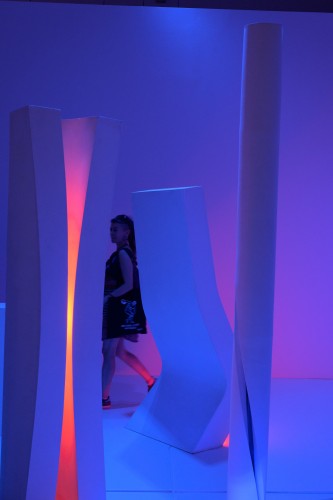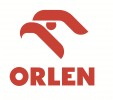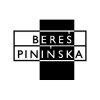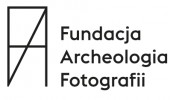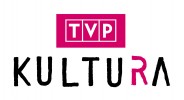Spaces
27.06 – 21.09.2025 Spaces
Zachęta – National Gallery of Art
artists: Magdalena Abakanowicz, Tadeusz Dobosz, Wojciech Fangor, Zdzisław Jurkiewicz, Teresa Kelm, Zygmunt Krauze, Andrzej Matuszewski, Ewa Partum, Maria Pinińska-Bereś, Henryk Stażewski, Stanisław Zamecznik
curator: Michał Jachuła
documentation: Marian Szpakowski, Zdzisław Głowacki, Tomasz Jaśkiewicz, Tadeusz Śliwiński, Tadeusz Wolański, Henryk Morel, Piotr Perepłyś, Rajmund Ziemski, Stefan Krygier, Marian Bogusz, Artur Brunsz, František Kysztal, Magdalena Więcek, Stefan Gierowski, Bronisław Kierzkowski, Roman Opałka, Bohdan Urbanowicz, Włodzimierz Borowski, Grzegorz Kowalski, Henryk Morel, Cezary Szubartowski, Edward Krasiński, Zbigniew Gostomski, Koji Kamoji, Andrzej Łobodziński, Krystyn Zieliński, Tadeusz Kantor, Zygmunt Targowski, Stanisław Dróżdż and others
The exhibition has a planned tour direction - please follow the designated route.
The entrance leads to the Narutowicz Room with Wojciech Fangor's work, and the exit is through the Gerson Room, which contains archives.
It is not possible to go back. If you wish to return to the object of your choice, you will have to walk the entire route to the end and start again from the entrance.
In room 4 there is a white revolving door. Please push them gently and be careful not to hit other people.
Only in room 6 by the work of Ewa Partum is there an interactive object on which you can sit. It is not allowed to sit on the other elements of the exhibition.
Thank you for your caution and enjoy your visit!
The exhibition titled Spaces is a unique opportunity to get immersed in a phenomenon that permanently changed the perception of art and its presence in our surroundings. By showing the work of the classics of Polish modern art – Magdalena Abakanowicz, Wojciech Fangor, Henryk Stażewski or Maria Pinińska-Bereś, to name but a few – the exhibition showcases the phenomenon of environment art, one of the most important and innovative trends in the second half of the 20th century.
What does art that engages various senses and literally draws the viewer into the work of art actually look like? At the Spaces exhibition at Zachęta – the National Gallery of Art, we present unique projects of the classic figures in Polish modern art, which have changed the way we think about space, the viewer, and the exposition. Reconstructions of historical works and abundant materials from the archives help explore pioneering artistic practices that continue to inspire others to this day.
The term environment refers to site-specific installation art that captures the viewer physically and engages their senses, with spaces designed in a way that allows the viewer to enter them and experience their light, sound, colour, and rhythm. This way of thinking about art predates today’s immersive installations by a few decades. It is not just about the form but about the entire logic of the creative process, which combines painting, sculpture, architecture, and performance.
In Poland, the artistic community took up this trend quite early. The Study of Space (1958) by Wojciech Fangor and Stanisław Zamecznik is considered to be the first work of environment art in Poland. With its experiments with perspective, depth, and three-dimensionality, painting became the major driver for the development of environment art in our country. Another important impulse came from the cooperation between artists and architects in designing exhibitions, especially with Oskar and Zofia Hansens, and Stanisław Zamecznik.
The exhibition includes five reconstructions of environment installations; three of them are presented for the first time since their creation. They differ in their approach – from one rooted in painting or the concept, through sculpture, to attempts at captivating the viewer’s senses. The criterion of originality and experimentation is the common denominator for all of them.
Apart from reconstructions, the exposition also includes documentation of the work of artists such as Włodzimierz Borowski, Józef Szajna, Zbigniew Dłubak, Edward Krasiński, Zbigniew Gostomski, and Zygmunt Targowski.
The exhibition also highlights the important context for the trend, i.e. the galleries and artistic events that made it possible for artists to experiment with form and space. Apart from Galeria Foksal, whose tiny exposition space encouraged working with space and with the concept of the exhibition as an art medium, Zachęta also recalls Galeria Współczesna in Warsaw, run by Janusz and Maria Boguccy, where four of the works reconstructed today were displayed across the 1960s and 1970s.
The Spaces exhibition is more that an overview of historical projects. It is also meant to be a reflection on how environment art shaped new models of thinking about exposition, the relationship with the viewer, and the limits of the specific artistic disciplines. With the omnipresent immersive installations and digital media, the exhibition goes back to the sources of this phenomenon and allows for appreciating the pioneering approach of the creators, who overcame numerous limitations to freely explore experimentation in art.
Information for visitors
In the archive room of the “Spaces” exhibition, we are conducting research on how the exhibition space is used.
Only aggregated data on visitor traffic in the rooms (so-called heat maps) is recorded. This data does not allow for the identification of individual persons.
The research will be conducted on the following dates: August 24–31 and September 15–21.
Data controller
The data controller is Zachęta – National Gallery of Art, based in Warsaw (pl. Małachowskiego 3, 00-916 Warsaw).
Purposes and legal basis for processing
The data is processed solely for research purposes, i.e. to analyze how the exhibition space is used and to improve the visitor experience (Article 6(1)(e) of the RODO – fulfillment of a task carried out in the public interest in the area of cultural activities).
Scope of data and method of processing
The data is anonymized (heat maps, traffic statistics), does not allow for the identification of specific individuals, and is not combined with other information.
Storage period
The data in aggregated form will be stored for the period necessary to conduct the research analysis and prepare the report, and then deleted.
Individual rights
Visitors have the right to:
• obtain information about data processing,
• lodge a complaint with the Chief of the Personal Data Protection Office.
For matters related to data protection, please contact the Data Protection Officer at Zachęta, Paweł Mościcki, by email at: iodo@zacheta.art.pl or by post to the Zachęta mailing address with the note IOD.
Participation in the survey is voluntary. Those who do not wish to participate are welcome to visit the exhibition at another time – without registering their data.
Zdzisław Jurkiewicz, Environment in Pulsating Red and Blue Light, 1969, Pod Moną Lisą Gallery, Wrocław, photo: Tadeusz Rolke, courtesy of Lower Silesia Society of the Fine Arts
Spaces
27.06 – 21.09.2025
Zachęta – National Gallery of Art
pl. Małachowskiego 3, 00-916 Warsaw
See on the map
Godziny otwarcia:
Tuesday – Sunday 12–8 p.m.
Thursday – free entry
ticket office is open until 7.30 p.m.
